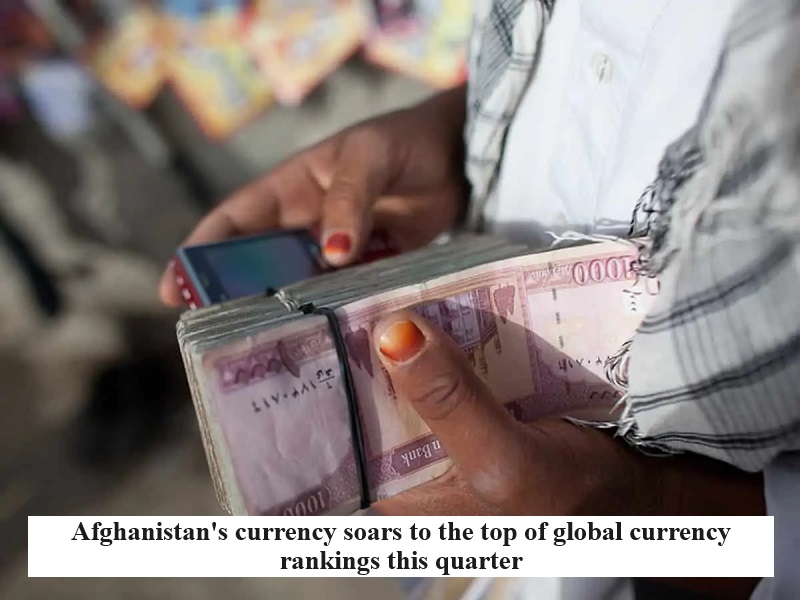
In a remarkable turn of events, Afghanistan’s currency, the afghani, has experienced an unprecedented surge in global currency rankings during this quarter. This unexpected rise, outperforming many other currencies worldwide, is attributed to the influx of billions of dollars in humanitarian aid and increased trade with Asian neighboring countries.
Despite Afghanistan’s dire economic and humanitarian conditions, the afghani has appreciated by approximately 9% this quarter, with projections of a further 14% appreciation over the course of the year. This remarkable ascent places it behind only the Colombian peso and Sri Lankan rupee in global currency rankings, as reported by Bloomberg.
The Taliban regime, which took control of Afghanistan two years ago, has implemented stringent measures to control the afghani’s value. These measures involve prohibiting the use of foreign currencies like the US dollar and Pakistani rupee in local transactions, imposing stricter restrictions on foreign currency movements, and criminalizing online trading. These policies have led to a substantial surge in demand for the afghani, resulting in its increased value.
Bloomberg referenced Kamran Bokhari, an expert in Middle Eastern, Central, and South Asian affairs at the Washington-based New Lines Institute for Strategy & Policy, who cautioned that while the hard currency controls are currently effective, the nation’s economic, social, and political instability may cause this currency rise to be short-lived.
In light of financial sanctions, foreign exchange transactions in Afghanistan are now predominantly conducted through local money changers, known as ‘sarrafs,’ who operate in markets and shops across the country. This decentralized approach to currency exchange has become essential as Afghanistan remains largely isolated from the global financial system due to international sanctions.
Furthermore, remittances to Afghanistan are primarily facilitated through the age-old Hawala money transfer system, a practice common in regions such as the Middle East. This system has become integral to the operations of the sarrafs who handle the majority of foreign exchange transactions.
However, despite the afghani’s recent surge, the humanitarian situation in Afghanistan remains dire, with a significant gap between the estimated $3.2 billion needed in aid this year and the $1.1 billion deployed so far, leaving millions in desperate need.
While there is some optimism regarding Afghanistan’s economic outlook, with the World Bank predicting an end to economic contraction and potential growth of 2% to 3% until 2025, concerns persist regarding possible reductions in global aid as the Taliban intensifies its suppression of women.
Anwita Basu, head of Europe country risk at BMI in London, suggested that tightened restrictions on foreign exchange transactions and gradual improvements in trade are increasing demand for the afghani. She also noted that the currency is likely to stabilize at its current levels until the end of the year.
Furthermore, Afghanistan’s cash-strapped Taliban government is actively seeking investments in the country’s valuable resources, including lithium and minerals estimated to be worth up to $3 trillion. Agreements with Chinese, British, and Turkish companies for large-scale mining operations have been finalized, with expectations of further investments as part of the Belt and Road Initiative expansion into Afghanistan.
However, despite the afghani’s recent success, it remains susceptible to shifts in political stability. Anwita Basu from BMI emphasized, “Ultimately, political stability will determine the fate of the currency – if the Taliban lose control domestically, the currency will also suffer.”

Post Your Comments